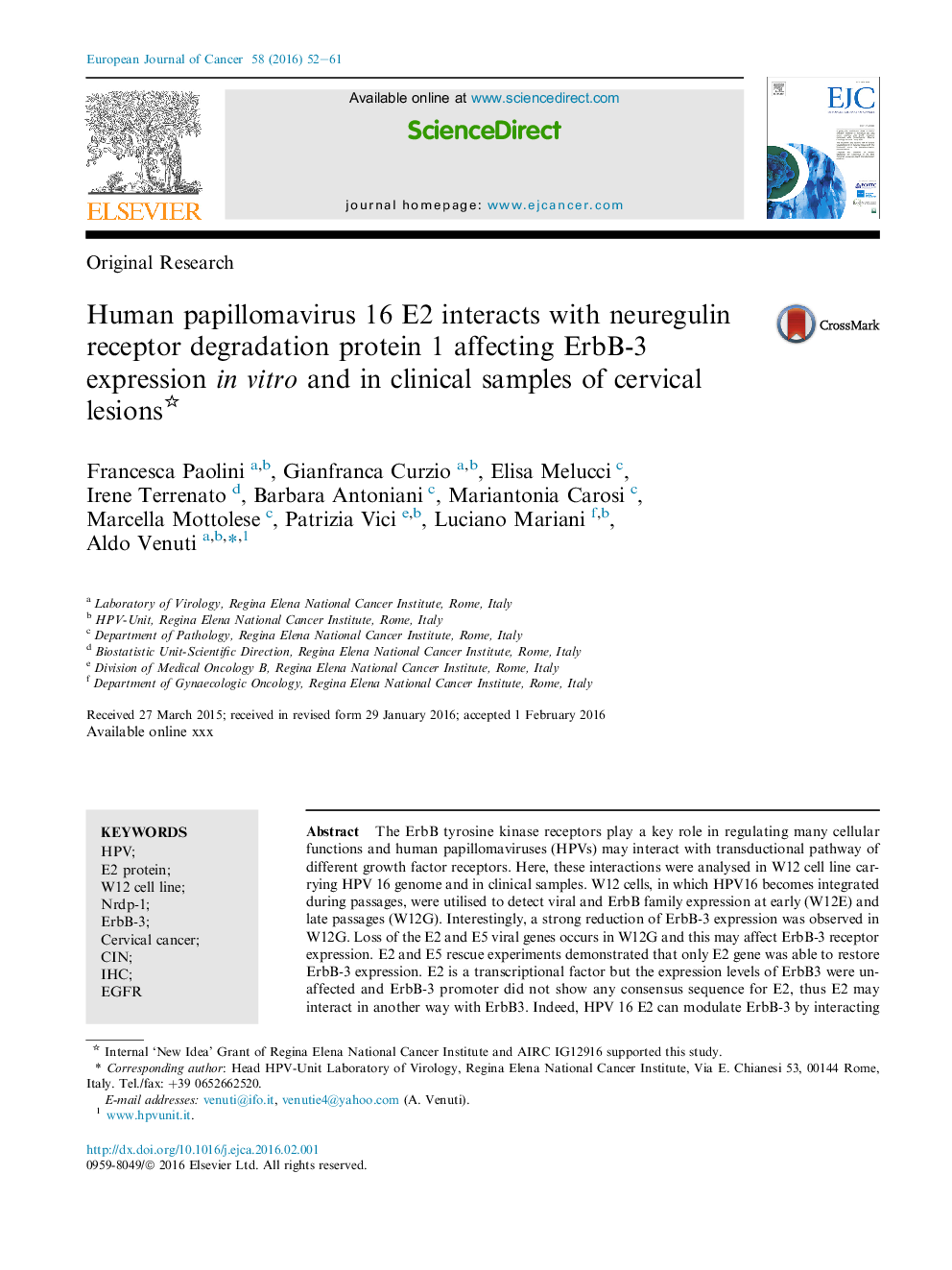| Article ID | Journal | Published Year | Pages | File Type |
|---|---|---|---|---|
| 8441221 | European Journal of Cancer | 2016 | 10 Pages |
Abstract
The ErbB tyrosine kinase receptors play a key role in regulating many cellular functions and human papillomaviruses (HPVs) may interact with transductional pathway of different growth factor receptors. Here, these interactions were analysed in W12 cell line carrying HPV 16 genome and in clinical samples. W12 cells, in which HPV16 becomes integrated during passages, were utilised to detect viral and ErbB family expression at early (W12E) and late passages (W12G). Interestingly, a strong reduction of ErbB-3 expression was observed in W12G. Loss of the E2 and E5 viral genes occurs in W12G and this may affect ErbB-3 receptor expression. E2 and E5 rescue experiments demonstrated that only E2 gene was able to restore ErbB-3 expression. E2 is a transcriptional factor but the expression levels of ErbB3 were unaffected and ErbB-3 promoter did not show any consensus sequence for E2, thus E2 may interact in another way with ErbB3. Indeed, HPV 16 E2 can modulate ErbB-3 by interacting with the ubiquitin ligase neuregulin receptor degradation protein 1 (Nrdp-1) that is involved in the regulation of this receptor, via ubiquitination and degradation. E2 co-immunoprecipitated in a complex with Nrdp-1 leading to hypothesise an involvement of this interaction in ErbB-3 regulation. In addition, 90% of the clinical samples with integrated virus and E2 loss showed no or low ErbB-3 positivity, confirming in vitro results. In conclusion, the new discovered interaction of HPV-16 E2 with Nrdp-1 may affect ErbB-3 expression.
Related Topics
Life Sciences
Biochemistry, Genetics and Molecular Biology
Cancer Research
Authors
Francesca Paolini, Gianfranca Curzio, Elisa Melucci, Irene Terrenato, Barbara Antoniani, Mariantonia Carosi, Marcella Mottolese, Patrizia Vici, Luciano Mariani, Aldo Venuti,
